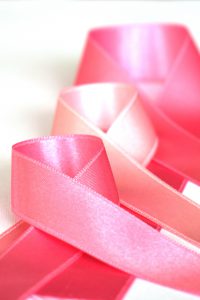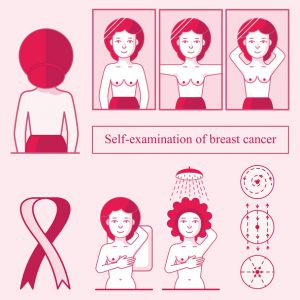It’s the summer of 2006. I’m in the shower.
I decide to give myself a breast exam after learning about it in school.
“What is this? Is this a lump?”
Panic sets in.
It is a lump and pretty big.
I call my doctor to schedule an appointment.
They tell me to see a specialist, so I do.
Surgery. The only word I hear.
I get home and tell my mom.
She panics and cries.
I panic even more now.
I schedule the surgery and wait while trying to hold it together.
After the surgery, I impatiently wait for the results.
After what seemed to be the most excruciating week of my life, I get a call.
Benign.
Relief.

The truth is that I was very lucky because 1 in 8 women in the U.S. will develop breast cancer over their lifetime. For those under 45 years old, breast cancer is more common in African American women, and they are more likely to die from it. Since October is Breast Cancer Awareness Month, it is the perfect time to discuss ways women can catch it
early on. Studies show that regular self-exams are best for early breast cancer detection. Most cases are found during daily activities like showering or applying deodorant. But, finding a lump is not the only symptom to keep an eye on.
Symptoms
Breast changes usually occur from hormones. If you experience any of the following symptoms, then it is important that you see your doctor.
- Lump/s- This is the most obvious and common symptom of breast cancer. It will feel like a ball in your breast, either soft, hard, or rubbery.
- Skin Redness- If your skin is red, bruised, or discolored, then see your doctor. Even if there was trauma to the breast area, seek medical attention.
- Dimpling- Skin dimpling is a sign of inflammation in the breast. Cancer cells cause a buildup of lymph fluid, which will lead to swelling and dimpling of the skin.
- Nipple Discharge– Discharge from the nipple can be anywhere from thin to thick, and can be any color from clear to milky, yellow, green, or red. This is a huge red flag. It might be an infection or a side effect of birth control, but it is best to seek your doctor’s opinion.
- Swelling- If your breast is swollen or different in size than normal, breast cancer might be the cause. Your skin can also feel tight with the swelling.
- Breast or Nipple Pain- Breast cancer is usually painless, but if you feel discomfort in the breast, such as a burning sensation, then seek medical attention.
- Scaliness or Thickening of the Breast Skin- Another symptom is eczema, scaliness, or thickening of the skin around the breast.
- Nipple retraction or inversion- Breast cancer can cause changes in the nipple, such as inverting it, or changing the size of it.

One major way to catch breast cancer early is by doing routine self-exams on your breats.
If you do experience any of these symptoms, do not panic right away. It is understandable to worry, especially if your family has a history of breast cancer. I did research before my surgery because of the panic. I was worried and needed to make sure I was going to be okay.
Some changes in your breasts might be due to age, birth control pills, infections, or something less serious than breast cancer. Conduct breast self-exams regularly when you are in the shower in order to discover any changes.
The older you get, mainly after 40 years old, the higher the risk of breast cancer. At this time you should be
scheduling an annual mammogram because the faster you find breast cancer, then the better your chances of beating it.
A couple of years after my scare, my family found out my aunt had stage 4 breast cancer, and unfortunately, she could not beat it. And within the past 2 years, I have found out a couple of friends, and friends of friends, were diagnosed with breast cancer, at the ages of 30-35 years old.
Finding all of this out has made me more proactive in my breast health than ever. Always take the safer route of getting checked by your doctor if you experience any of the symptoms. It does not even take 5 minutes to conduct a self-exam, and it might just save your life.
